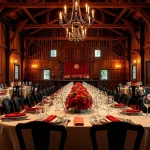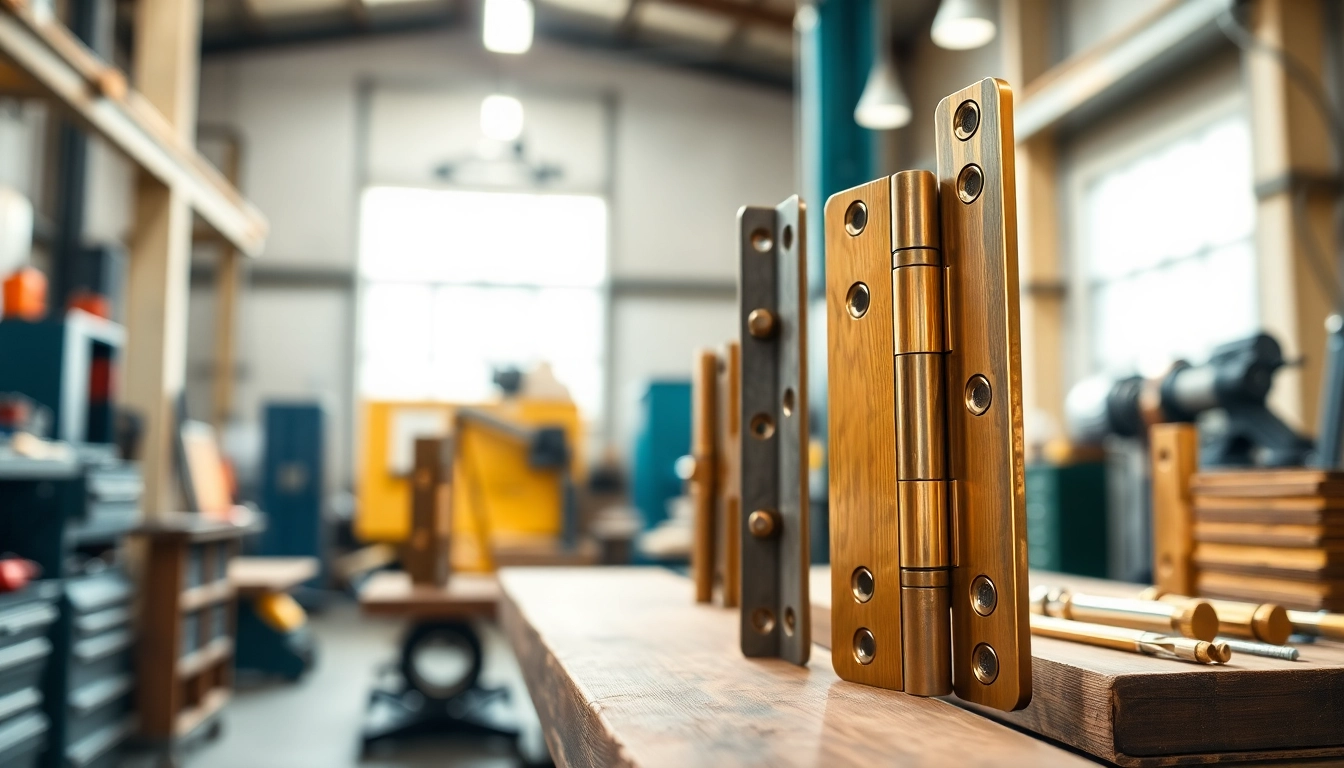Understanding Door Hinges: Types and Applications
Door hinges are essential components that enable smooth and functional operation of doors in residential, commercial, and industrial settings. Given the variety of doors and their applications, hinges are available in multiple configurations, materials, and styles to meet specific requirements. As a Door Hinges Manufacturer, understanding the nuances of different types of hinges and their applications can help you make informed decisions about which types to use in various projects.
1. Common Types of Door Hinges
Several types of door hinges exist, each designed to fulfill unique functionality and aesthetics. Let us explore the most common types:
- Butt Hinges: The most common type used on residential doors, butt hinges consist of two leaves joined by a pin. They are versatile and typically made of steel, brass, or nickel.
- Continuous Hinges: Also known as piano hinges, these are long, continuous strips of metal that run the entire length of the door, providing uniform support. Ideal for heavy doors.
- Lever Arm Hinges: Suitable for automatic doors, lever arm hinges use a mechanical lever, enabling easy door operation.
- Spring Hinges: Designed for doors that need to close automatically, spring hinges have an internal spring mechanism that returns the door to a closed position after being opened.
- Concealed Hinges: Hiding the mechanism inside the door, these hinges are commonly used in cabinets and create a sleek, minimal look.
- Specialty Hinges: These encompass a variety of unique designs for specific applications, such as double-action hinges that allow doors to swing both ways.
2. Key Features of Durable Hinges
When selecting hinges, durability is a primary concern. Here are the key features that contribute to the longevity of door hinges:
- Material Quality: Opt for materials such as stainless steel, which is resistant to rust and corrosion.
- Load-Bearing Capacity: Consider the weight of the door; heavier doors need robust hinges capable of supporting greater weight.
- Finish: Protective coatings can enhance resistance to wear and tear, affecting the longevity and aesthetic appearance.
- Design Interventions: Features such as self-lubricating systems reduce friction and wear, extending the life of the hinge.
3. Choosing the Right Hinge for Your Project
Selecting the appropriate hinge for your project involves considering various factors. Here are steps to help guide your choice:
- Identify the Application: Determine whether the hinge will be used on a residential, commercial, or specialized door.
- Assess Door Material: Examine what material the door is made from—different materials may require different hinge types.
- Account for Frequency of Use: High-traffic doors need heavier-duty hinges that can withstand frequent opening and closing.
- Evaluate Design Needs: Consider the aesthetics of the space and choose hinges that complement the door’s design.
Why Partner with a Reliable Door Hinges Manufacturer
Partnering with a reputable door hinges manufacturer ensures that you receive quality products that meet your expectations. Here are key reasons to consider:
1. The Importance of Quality in Manufacturing
Quality hinges are essential for several reasons:
- Operational Efficiency: High-quality hinges lead to smoother door operations, enhancing user experience.
- Longevity: Quality manufacturing translates life into the product, saving replacement costs in the long run.
- Safety: Subpar hinges can compromise safety, leading to accidents or door failures.
2. Benefits of Customized Hinges
Customization allows for hinges to meet specific project requirements:
- Fit and Function: Custom sizes ensure that the hinges fit perfectly with any architectural design.
- Special Features: Analyze any specific needs, such as fire safety regulations or security features.
3. Choosing the Right Manufacturer for Your Needs
Selecting the right manufacturer is crucial. Here are considerations:
- Experience: Look for manufacturers with a proven track record in the industry.
- Variety: Partner with a manufacturer that provides a wide range of hinge options and materials.
- Feedback: Read reviews and case studies to understand the quality of their products and customer satisfaction.
Innovations in Door Hinges: Trends to Watch
The door hinge industry is witnessing innovative trends that improve functionality and aesthetics. Here are some trends to monitor:
1. Eco-Friendly Materials and Designs
Increasing awareness of environmental sustainability is pushing manufacturers to develop eco-friendly hinges. These are often made from recycled materials and designed to minimize waste during production.
2. Smart Hinges: The Next Evolution
As smart home technology evolves, so do hinges. Smart hinges can integrate with door control systems, providing automation and enhanced security features. This evolution caters to modern lifestyle demands by enhancing convenience and security.
3. Aesthetics: How Design Impacts Functionality
Modern design emphasizes aesthetics in all aspects of construction, including hinges. Manufacturers are investing in customized finishes and decorative designs that blend with various interior styles, from contemporary to traditional, while maintaining functionality.
Installation and Maintenance of Door Hinges
Proper installation and maintenance are crucial for optimizing the performance of door hinges. Here are the steps and tips to ensure that hinges perform effectively throughout their lifespan.
1. Step-by-Step Installation Guide
The following are general steps for installing door hinges:
- Gather Tools: You will need a drill, screwdriver, level, measuring tape, and appropriate hinges.
- Measure and Mark: Measure the height from the floor to position the hinge correctly. Mark where you will be placing the hinges on the door and the frame.
- Drill Holes: Drill pilot holes based on the hinge specifications, ensuring precision to align with the door and frame perfectly.
- Attach Hinges: Screw the hinges onto the door and frame securely. Make sure they are flush against the surfaces for aesthetic appeal.
- Test Closure: Open and close the door several times to ensure that it operates smoothly and is properly aligned.
2. Maintenance Tips for Longevity
Regular maintenance can significantly enhance hinge longevity:
- Lubrication: Periodically apply lubricant to prevent rust and ensure smooth operation.
- Inspection: Regularly inspect for wear and damage. Promptly replace worn-out hinges to avoid malfunction.
- Cleaning: Clean hinges with a damp cloth to remove dirt and debris that might affect functionality.
3. Common Issues and Troubleshooting
Here are some common hinge-related issues and their solutions:
- Squeaking Sound: This usually indicates a lack of lubrication. Apply lubricant to resolve the issue.
- Door Misalignment: If a door drags on the frame, the hinges may need tightening or repositioning.
- Difficulty Opening/Closing: Inspect for obstructions, misalignments, or wear on the hinges.
The Future of Door Hinges in Construction and Design
As the construction and design industries evolve, hinges will undoubtedly adapt to meet new requirements and technologies.
1. Market Trends and Forecast
The door hinge market is projected to grow with the rising demand for modular and flexible designs in construction. Additionally, the integration of smart technology within hinges will further push innovation.
2. The Role of Technology in Manufacturing
Advanced manufacturing processes, including 3D printing and precision engineering, will allow for high customization and innovative designs that provide enhanced performance features.
3. Building for Sustainability in the Hinge Industry
With global focus shifting towards sustainability, more manufacturers will adopt eco-friendly practices, emphasizing recycled materials and processes that minimize environmental impact.









